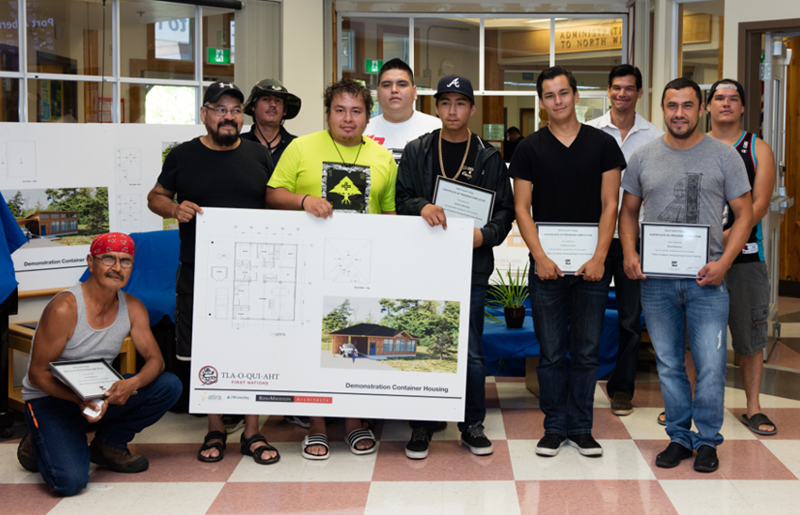
June 26, 2017
Container housing and training at Tla-o-qui-aht First Nation
The people of Tla-o-qui-aht First Nation are finding a new use for shipping containers. Members of the northern Tofino community are converting them into affordable homes for their growing population.
These containers transform into creative & environmentally friendly #affordablehousing
Supported by Indigenous and Northern Affairs Canada and Canada Mortgage and Housing Corporation, the project is providing quality housing and new opportunities for everyone involved.
Tofino Container Housing Project is a 6-week training program led by the community and delivered by North Island College. Initially, 10 community members participated in training for safety certifications, technical skills and first aid. They also learned about housing management, administration and maintenance.
In addition to providing practical skills for the container conversions, the training hours will count towards participants’ carpentry apprenticeships.
“This training is universal,” says Tla-o-qui-aht’s Housing Manager, Ivy Bell. “It can and has been utilized within their current employment with Tla-o-qui-aht First Nations.”
Investing in the future
In the first phase of the project, participants are building 13 container homes. This will serve as a pilot for future projects and housing developments.
Under a Tla-o-qui-aht proposal, some of the container homes would stay in the community permanently. A larger affordable housing development will also be built on off-reserve land owned by the First Nation. This will be built by the trained Tla-o-qui-aht members as well, so the money will remain in the community.
Once completed, the houses will look very much like traditional wood-structure homes, while also combining economy, design and sustainability.
“We ‘up-cycle’ the ugly container and turn it into something useful and beautiful,” Ivy says. “Tla-o-qui-aht has always been concerned about the environmental impact of its activities and sees this as a great opportunity to demonstrate what can be accomplished.”
Several funding avenues helped make this project possible. To learn more, visit:
- New Approach for Housing Support in British Columbia (INAC)
- Residential Rehabilitation Assistance Program Conversion On-Reserve (CMHC)

